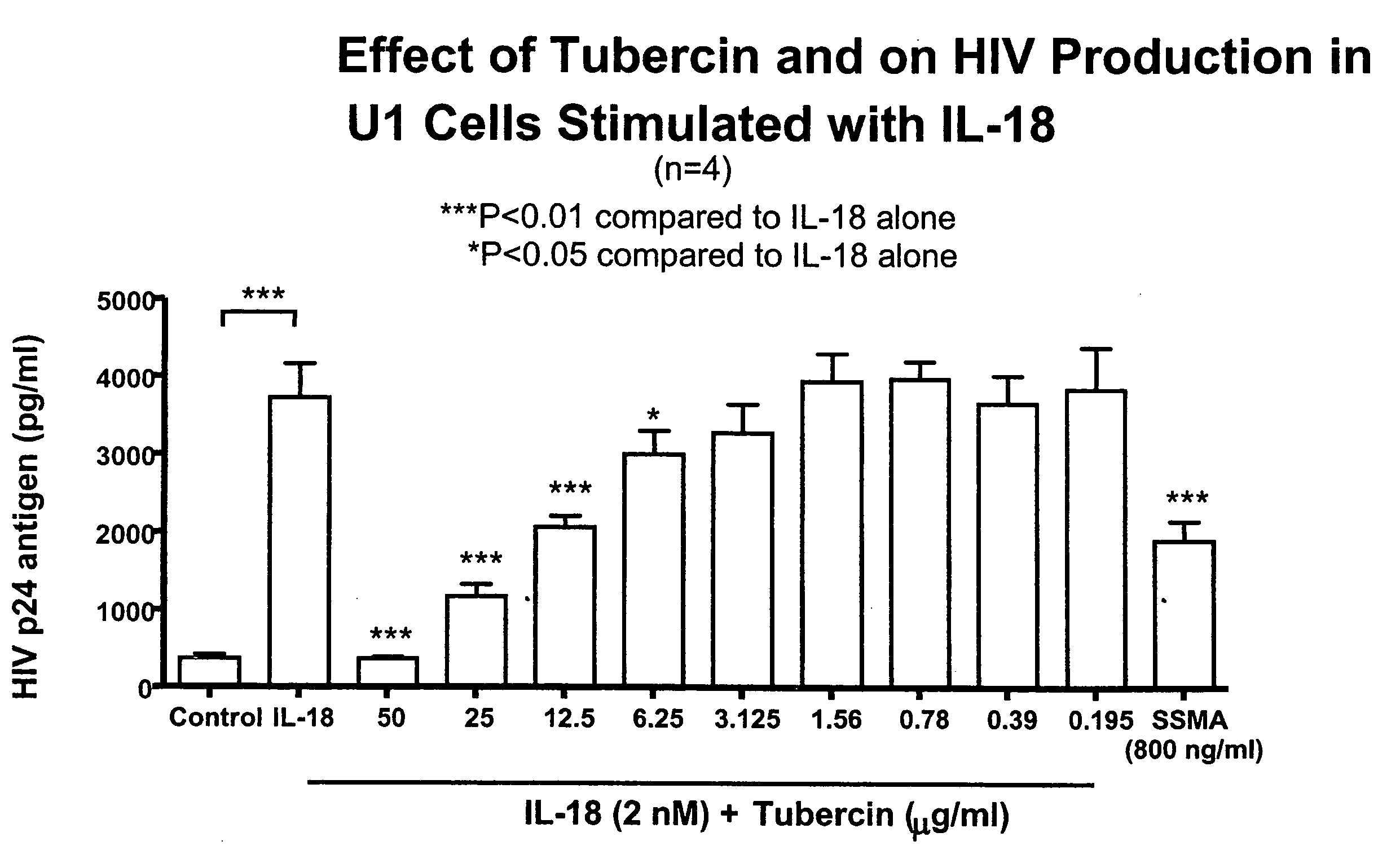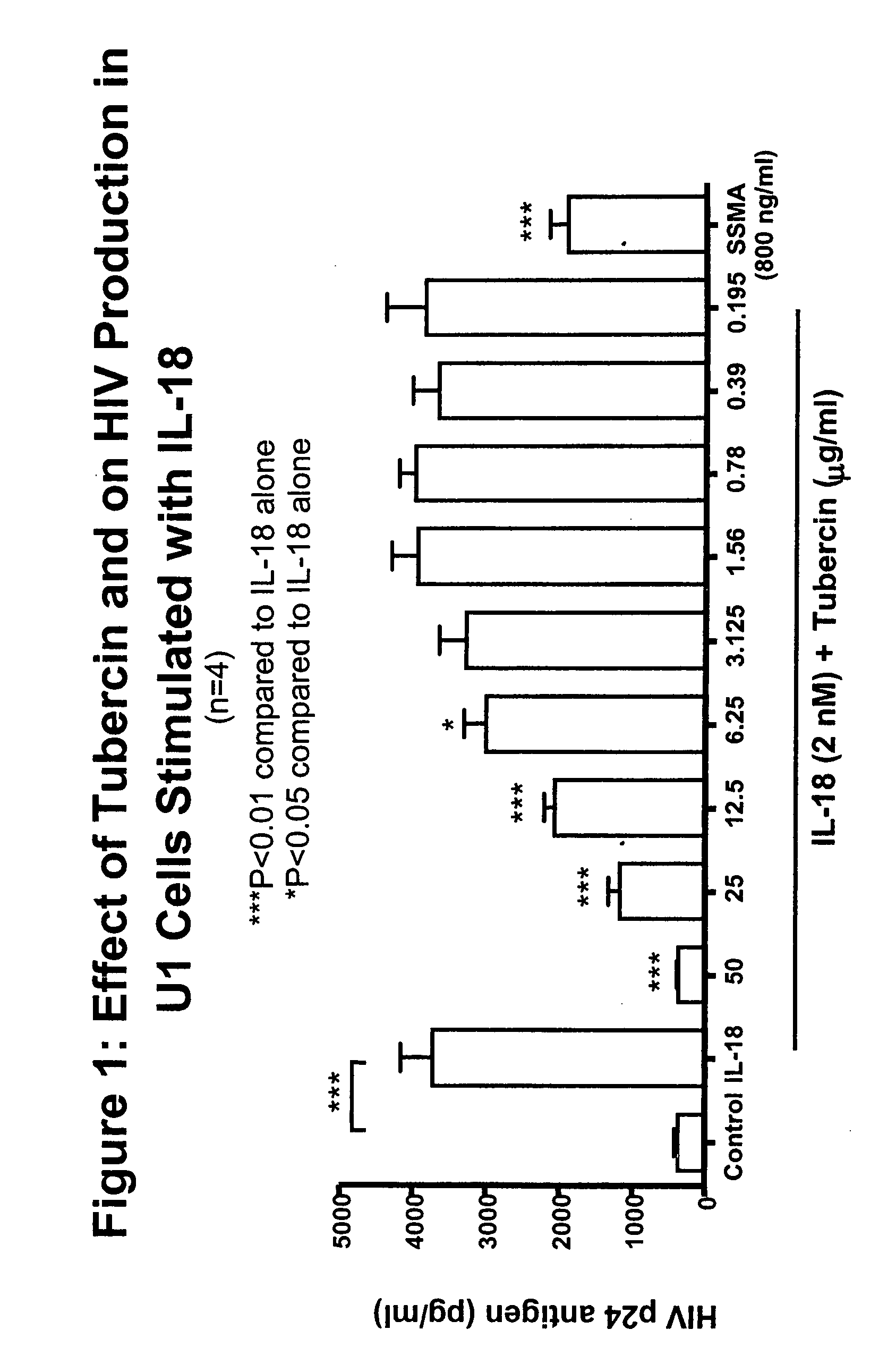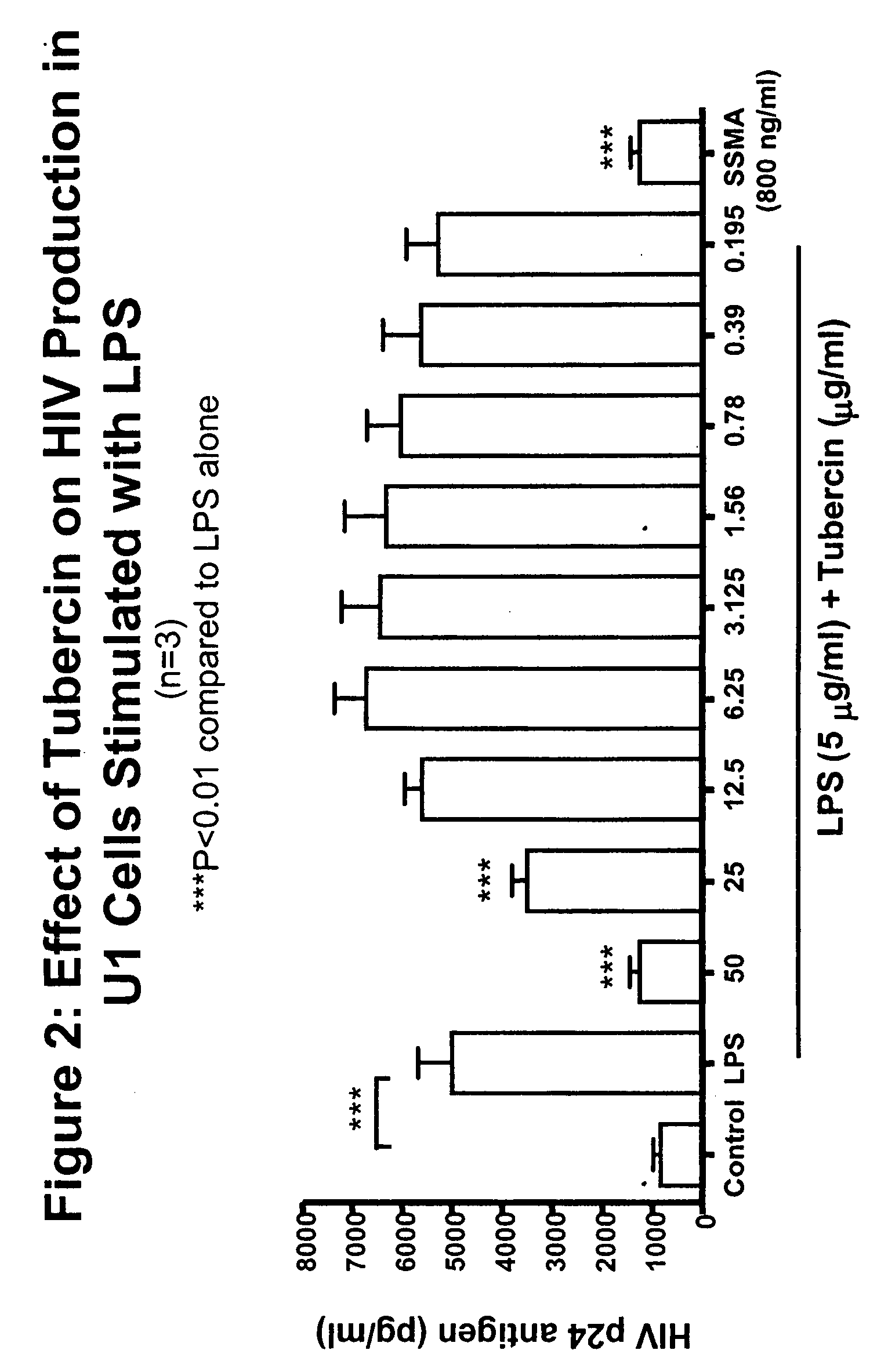Methods and compositions for treatment of viral infections
- Summary
- Abstract
- Description
- Claims
- Application Information
AI Technical Summary
Benefits of technology
Problems solved by technology
Method used
Image
Examples
examples
[0239]The following specific examples are provided to better assist the reader in the various aspects of practicing the present invention. As these specific examples are merely illustrative, nothing in the following descriptions should be construed as limiting the invention in any way. Such limitations are, or course, defined solely by the accompanying claims.
example one
Introduction / Materials and Methods
[0240]HIV is a human retrovirus that integrates into the genome of the host. After integrating into the host genome as a provirus, HIV can be induced to replicate from this latent reservoir following stimulation with several endogenous and exogenous pro-inflammatory molecules. Examples of endogenous pro-inflammatory molecules include certain cytokines like interleukin (IL)-1, IL-18, and tumor necrosis factor (TNF). Exogenous pro-inflammatory substances include the bacterial cell wall product lipopolysaccharide (LPS or endotoxin) and the gram-positive cell-wall substance lipoteichoic acid. U1 cells are a human cell line derived from human monocytic U937 cells that contain 2 copies of Human Immunodeficiency Virus Type 1 (HIV) incorporated into the cell nucleus as a provirus. Upon stimulation with any of several pro-inflammatory mediators, the amount of expressed virus can be dramatically increased. Therefore, these cells constitute an in vitro model o...
example two
Introduction / Materials and Methods
[0245]In the same U1 cell line used in FIG. 1, the generalizability of the Tubercin and SSMA inhibitory activity was assessed. To accomplish this, U1 cells were stimulated to produce HIV using lipopolysaccharide (LPS, also referred to as endotoxin) instead of IL-18. Using the same protocol as described for FIG. 1, U1 cells were stimulated in the absence or the presence of Tubercin or SSMA to assess the effect of Tubercin on LPS-induced HIV.
[0246]Results:
[0247]As shown in FIG. 2, the presence of Tubercin at final concentrations 50 or 25 μg / ml significantly inhibited the amount of HIV stimulated by 5 μg / ml LPS. Additionally, the presence of SSMA at 800 ng / ml substantially inhibited HIV production in these experiments.
[0248]Discussion:
[0249]These results extend the data shown in FIG. 1 to demonstrate that Tubercin and SSMA can inhibit stimulated HIV. It is thus suggested that the Tubercin and SSMA inhibitory effect is not stimulus-specific.
PUM
| Property | Measurement | Unit |
|---|---|---|
| Fraction | aaaaa | aaaaa |
| Fraction | aaaaa | aaaaa |
| Fraction | aaaaa | aaaaa |
Abstract
Description
Claims
Application Information
 Login to View More
Login to View More - R&D
- Intellectual Property
- Life Sciences
- Materials
- Tech Scout
- Unparalleled Data Quality
- Higher Quality Content
- 60% Fewer Hallucinations
Browse by: Latest US Patents, China's latest patents, Technical Efficacy Thesaurus, Application Domain, Technology Topic, Popular Technical Reports.
© 2025 PatSnap. All rights reserved.Legal|Privacy policy|Modern Slavery Act Transparency Statement|Sitemap|About US| Contact US: help@patsnap.com



